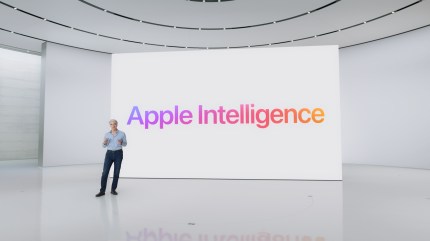Very rarely, an app comes along that changes your life. I want to tell you about such an app, and how it changed mine. I had nothing to do with its making; I have never installed or opened it on my phone; and yet, I expect that this will be the most personal of the almost 400 pieces I have written for TechCrunch over the years.
It is estimated that between one-third and one-half of adults in the United States and United Kingdom suffer from a chronic pain condition, a third of whom — i.e. tens of millions — are moderately or severely disabled by it. Those stunning numbers help to explain why, according to the CDC, “sales of prescription opioids in the U.S. nearly quadrupled from 1999 to 2014” — but to no avail — “there has not been an overall change in the amount of pain Americans report.”
My wife was, until recently, among that number. She suffered from chronic migraine, a.k.a. 15 or more migraine days every single month, a condition which affects roughly 1% of the population. In her case it came on several years ago, gradually but unstoppably. And while modern medications can work wonders on migraines, this is only true up to a point; after circa 10 medication days per month, migraine meds begin to trigger increasingly vicious migraines themselves, a bitterly ironic phenomenon known as “medication overuse headache.”
Those who do not suffer from migraines may not appreciate the extent to which they are far worse than just crippling headaches. A migraine is, rather, as a friend and Harvard professor of epidemiology once put it, “like a slow-motion seizure.” They can and do cause nausea, aphasia, wrenching serotonin crashes, brain fog, holes in one’s field of vision. They can and do reduce you to a shadow of yourself.
When you suffer from 18-20 migraine days per month, even though they are of varying severity, and even though you can medicate on half of those days, you essentially become disabled. Keeping up with her job as an attorney consumed effectively all of my wife’s available spoons. Her life shrank to her work, our home, and very occasional outings; and those outings were inevitably tense and fraught with anxiety for both of us, because when you live with chronic migraine, you never know exactly what might trigger one, but you do know that migraine triggers are absolutely fucking everywhere.
She gave up alcohol. She gave up sugar. She gave up caffeine. She gave up running. She gave up travel, one of her great loves, except when absolutely necessary, because air travel was a reliable migraine trigger, and long car rides weren’t great either. She gave up staying up late. She gave up naps. We became frequent fliers at urgent care clinics and ERs. We consulted with some of the world’s finest migraine specialists. They were wonderful, but they didn’t cure her.
She tried dozens of prescription medications. She tried Botox. She tried steroids. She tried meditation. She tried an IUD. She tried transcranial magnetic stimulation. She tried everything. She took a fistful of supplements and preventatives every day. She spent a week in a hospital with a port in her arm, getting twice daily infusions of powerful medication. Some of these things seemed to diminish the average severity of her migraines, a little bit; but none diminished their frequency.
It seems that for a lot of people, including my wife, once a migraine gets going, once that vicious death spiral of cascading neurochemicals has begun, there is no way out. (Relatedly, most anti-migraine medications need to be taken early on in the onset of an attack, or they are useless.) She had tried everything, and nothing seemed to stop them. At least once a month she would be hit by a three-day intractable migraine impervious to every medication, and would spend 72 hours in darkness, shuddering with agony, fighting nausea, eking out a precious few minutes of half-relief from heat or ice packs every now and again, gutting it out for what felt every time like an eternity.
To be honest we gave up even hoping that her condition might be curable. Migraine is a hereditary disorder, and while hers were the most severe, her sisters, mother, aunts, and cousins are all migraineurs too. I barely dared to hope that the next generation of anti-migraine medications, emerging in the next few years, might reduce her migraines by as many as five days per month. Hope is a real motherfucker, in a situation like this, with a chronic pain condition like this. Hope is always ready to turn around and kick you right in the teeth.
I promised you this was an article about an app. This is probably a good time to start talking about that.
The app is, appropriately, called Curable. Its treatment program is based on the (thoroughly scientifically grounded) notion that chronic pain tends to slowly rewire the brain to “perpetuate the feeling of pain” — and that this neurological sensitization to pain can be undone, in whole or in part, via mindfulness and cognitive behavioral therapy. Its founder and CEO, John Gribbin, fought lower back pain for fifteen years himself before overcoming it with this technique.
It may sound odd that cognitive techniques can overcome and eliminate real physical pain, but there is an sizable amount of hard science behind this, which Curable users are walked through. Lest you think this is a goofy fringe approach, the Mayo Clinic offers a similar multidisciplinary pain program, wherein “chronic pain, unlike the acute variety, [is] treated as a malfunction in perception, whether or not an ongoing physical cause [has] been identified” (7) … for $40,000 (not to mention an extended stay in Arizona, Florida or Minnesota). Curable, by contrast, is free at first, and ultimately charges all of $5 a month.
I don’t want to pretend that it will be a panacea for every chronic pain sufferer. It won’t. But I can tell you that in the two months since my wife started using it, she has gone from 18-20 migraine days a month to one or two. Yes, you read that correctly. She has resumed drinking wine, eating chocolate, running and lifting weights, napping, casually booking cross-country & transcontinental flights, and working long, strenuous attorney hours again. We have an appointment with her neurologist later this month … for a friendly dinner, because it doesn’t look like we’ll be needing his professional services much anytime soon.
I’ve read a lot of scientific studies about migraine and pain treatments over the last few years. I’m well aware that most of them have a subset of “super responders” for whom the results are especially dramatic. I know that not everyone who tries Curable will be as fortunate as my wife.
But Curable is the first attempt I’ve seen to take modern chronic pain treatment, wherein the pain is treated as a reversible consequence of neurological sensitization, and make it easily and readily available to the teeming, thronging, overwhelming masses of people who are suffering; and while I’m obviously heavily biased from my own experience with it, I can’t help but think that an enormous number of them could benefit hugely.































Comment